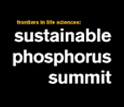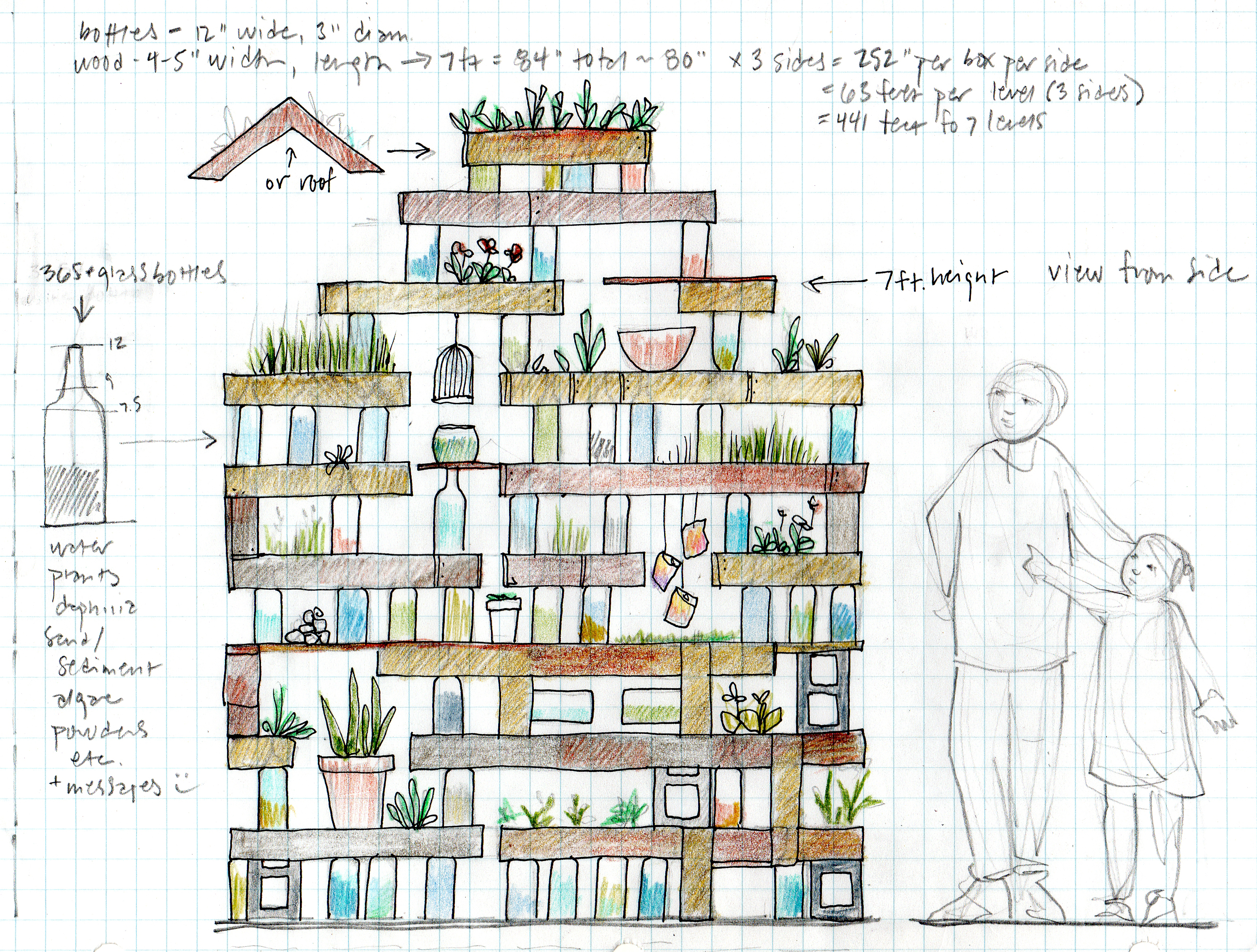News Release 11-023
Phosphorus: Too Much or Too Little?
Scientists and artists collaborate on accompanying works to address looming environmental issue

Ericka Cero Wood's artwork highlights this week's Sustainable Phosphorus Summit.
February 2, 2011
This material is available primarily for archival purposes. Telephone numbers or other contact information may be out of date; please see current contact information at media contacts.
Fertilizer is rarely an inspiration for an art show, but this week at Arizona State University (ASU), sustainability, fertilizer and phosphorus scarcity will provide fuel for creative vision.
The art show, a juried exhibition with works by artists from Phoenix, Chicago, Portland and Houston, was created in partnership with scientists engaged in the Sustainable Phosphorus Summit, to take place Feb. 3-5, 2011, at ASU.
The summit is funded by the National Science Foundation (NSF).
Phosphate is a type of salt, which is mined for use in industry and as a fertilizer in agriculture. It is an essential nutrient for life. Without it, people cannot grow food or build bones.
"We need to be concerned about the emerging threat of phosphorus scarcity, as well as the impacts of too much phosphorus through run-off into lakes and oceans," says Matt Kane, program director in NSF's Division of Environmental Biology, which supports the phosphorus summit.
Human activities have increased bioavailable phosphorus in the environment, or phosphorus from runoff, by some 400 percent, but the demand for it continues to increase. Meanwhile, phosphate available in mines--the only viable source--is on the decline.
The summit will explore phosphorus as a limited resource. It will bring together international experts to discuss issues ranging from the biological importance of phosphorus to concerns about national security.
The accompanying art exhibition will include paintings, photography, sculpture, multimedia and other innovative approaches to portraying phosphorus sustainability.
Through conversations with scientists, Arizona artist Patricia Sahertian developed a series of eight collages that examine phosphorus--from mining, to use in agriculture, to its eventual recycling in water and waste streams.
The result, she says, "lays out the budget of phosphorus in the city of Phoenix in a visual way that everyone can relate to."
Scientist David Iwaniec, an urban ecologist at ASU, asserts that the most compelling part of the art show is that it communicates much more than the basics of the phosphorus sustainability issue. "Introducing the issue is an important initial step, but the art goes beyond the simple problem of phosphorus scarcity to show the complexity at play," he says.
Iwaniec contends that artists and scientists, often viewed as immutably different from one another, gain much from the opportunity to work together creatively.
The scientist-artist collaborations also led to the incorporation of biological materials into the works themselves, including corn, sand, soybeans, switchgrass and snails.
For example, in her work "Our Floating Days" multimedia artist Angela Cazel Jahn learned to grow crustacean Daphnia and algae from ASU ecologist James Elser.
Jahn says the work shows that "big problems like phosphorus scarcity loom ahead."
"What happens next in the story is going to depend on how it is told, and who is telling it to what audience," Jahn says. "Participants in the summit will influence that story."
-NSF-
-
Scientists will address phosphorus issues at the Sustainable Phosphorus Summit.
Credit and Larger Version -
Angela Cazel Jahn first developed the work "Our Floating Days" as a sketch.
Credit and Larger Version
Media Contacts
Cheryl Dybas, NSF, (703) 292-7734, email: cdybas@nsf.gov
Peggy Coulombe, ASU, (480) 727-8934, email: Margaret.Coulombe@asu.edu
Related Websites
Sustainable Phosphorus Summit: http://sols.asu.edu/frontiers/2011/index.php
Sustainable Phosphorus Summit Art Show: http://sols.asu.edu/frontiers/2011/art.php
Slideshow: Sustainable Phosphorus Artwork by Christina Cassano: http://asunews.asu.edu/20110120_phosphorus_gallery#0
The U.S. National Science Foundation propels the nation forward by advancing fundamental research in all fields of science and engineering. NSF supports research and people by providing facilities, instruments and funding to support their ingenuity and sustain the U.S. as a global leader in research and innovation. With a fiscal year 2023 budget of $9.5 billion, NSF funds reach all 50 states through grants to nearly 2,000 colleges, universities and institutions. Each year, NSF receives more than 40,000 competitive proposals and makes about 11,000 new awards. Those awards include support for cooperative research with industry, Arctic and Antarctic research and operations, and U.S. participation in international scientific efforts.
Connect with us online
NSF website: nsf.gov
NSF News: nsf.gov/news
For News Media: nsf.gov/news/newsroom
Statistics: nsf.gov/statistics/
Awards database: nsf.gov/awardsearch/
Follow us on social
Twitter: twitter.com/NSF
Facebook: facebook.com/US.NSF
Instagram: instagram.com/nsfgov


